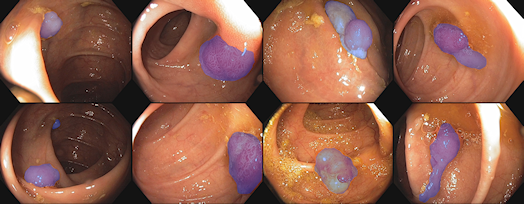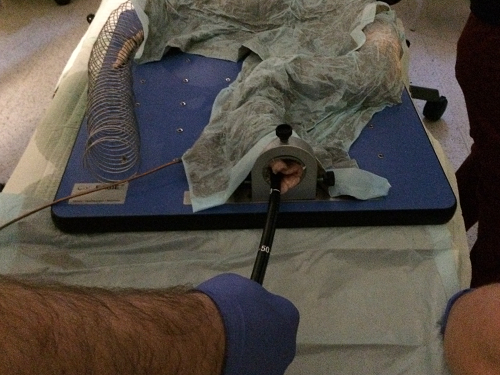The Challenge: Automatic Polyp Detection in Colonoscopy Videos
Colon cancer is the second leading cause of cancer death. Around 26,000 people die in Germany each year as a result. In 90 percent of these cases, special colon polyps serve as precursors to cancer. For this reason, periodic colonoscopy-based cancer screening for people 55 years and older is now covered under Germany´s statutory health insurance program. During a colonoscopy, the large intestine and rectum are examined with an endoscope. The effectiveness of this procedure depends heavily on the experience and attentiveness of the physician. Various studies show that 12 to 24 percent of the polyps go undetected, a rate that could be considerably lowered by instituting automatic polyp detection with image-generating processes. The real challenge is identifying small polyps and new formations that are flat and still under the surface.

